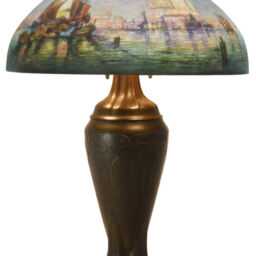Woad is famous as the source of the blue dye that has been used to dye wool and other fibres for several thousand years in Europe and the Middle East. The pigment is extracted from the dark blue-green, spinach-like woad leaves.
The Woad Plant
Woad (Isatis tinctoria) is a native of the Mediterranean and belongs to the family Cruciferae, more commonly known as the brassicas, and is closely related to broccoli, cabbage and rape seed. Woad grows readily and is considered a noxious weed in some states of the USA.
Woad is a biennial plant and grows for two years before dying down. In the first year, it forms a low-growing cluster of leaves like spinach. The leaves are harvested for dye production in the first year only, because they have little or no colour when they reach the second year.
In the second year, the leaves become longer and thinner and the woad plant looks quite different. It produces tall stems up to five or six feet in height with sprays of small, neon yellow flowers. The flowers, which appear in May, have a wonderful fragrance and attract plenty of bees. The black seeds that follow are winged, resembling small tongues and after producing seeds, the plant dies down.
Woad Blues
Dyeing with woad is very exciting. Wool or fabric is dipped into the vat, left for a few minutes, and then removed. At first the wool is pale yellow, but with exposure to air, the colour gradually turns to green and then to blue. This change in colour never ceases to fascinate viewers.
Woad is also very economical; 10 grams of woad pigment, for example, dyes more than 200 grams of wool a beautiful medium blue, and at least another 100 grams of wool a light blue.
Traditionally a fermentation vat was used to dye with woad, often started with stale urine. The fermentation removes the oxygen from the vat making the woad pigment soluble. Nowadays, chemicals such as spectralite are usually used to remove the oxygen from the vat.
Woad and the ancient Brits
Woad is native to the Mediterranean, originating in Turkey and the Middle East, from where it spread into Europe and has been in use as a dye plant since the Neolithic, 5 to 10,000 years ago.
Many people have heard that when Julius Caesar’s army invaded Britain in 55 BC, the Romans saw Picts painted blue with woad. There is a great deal of controversy regarding this statement, as it is unlikely that the Roman army, which was mainly in the south, ever came across any Picts, who lived in the north of Scotland. Further, woad is difficult to use as body paint and not suitable for tattoos.
Woad as an anti-cancer agent
It is not only a blue dye that can be extracted from woad; the woad plant has also become a weapon in the fight against breast cancer. Recent research has found that this plant has 20 times more of the anti-cancer chemical glucobrassicin than broccoli. It is difficult to extract the chemical from broccoli, so woad provides an effective alternative. Woad can produce even more of this chemical if the young leaves are damaged. Do not try to eat woad though as this plant is not edible.
Wearing woad
Have your heard the Woad Song? The last stanza goes like this;
March on Snowdon with your woad on,
Never mind if you get rained or snowed on
Never want a button sewed on.
Go it Ancient Britons!
Today there is enough information available on the internet to allow you to grow your own woad, extract the blue pigment, dye some local wool and knit a blue scarf to wear when you are next climbing Snowdon (or your local mountain peak)!
AUTOPOST by BEDEWY VISIT GAHZLY



